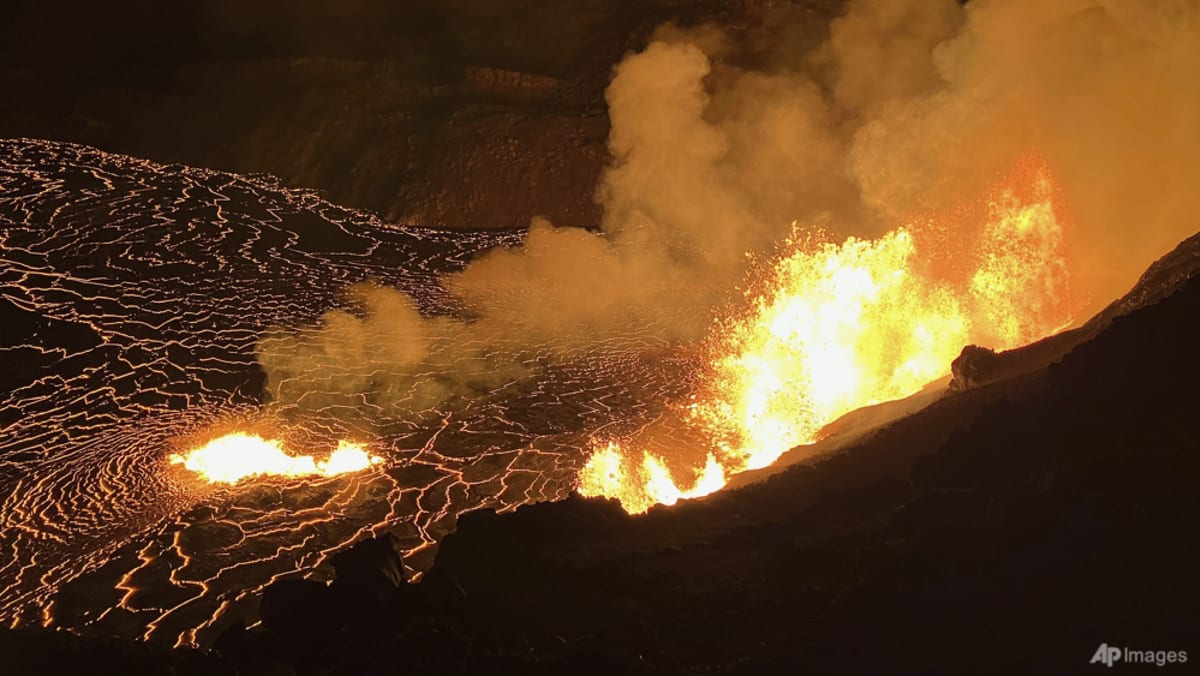NASA says Boeing’s Starliner astronauts will return to Earth on different spacecraft in February

The two astronauts who went up to the International Space Station (ISS) on Boeing’s Starliner will have to come home on a different spacecraft next year, NASA officials announced Saturday.
Astronauts Barry “Butch” Wilmore and Sunita “Suni” Williams, who performed the first crewed test flight of Starliner, will return in February 2025 on the Space-X crew 9, according to NASA.
The Boeing Starliner will return in a separate flight uncrewed, NASA said.
“The decision to keep Butch and Suni aboard the International Space Station and bring the Boeing Starliner home uncrewed is a result of a commitment to safety,” NASA administrator Bill Nelson said at a news conference.
This undated handout picture from Nasa released on July 2, 2024 shows NASA’s Boeing Crew Flight Test astronauts (from top) Butch Wilmore and Suni Williams inside the vestibule between the forward port on the International Space Station’s Harmony module and Boeing’s Starliner spacecraft.
Handout/NASA/AFP via Getty Images
When Wilmore and Williams launched on June 5, they were originally scheduled to only be on the ISS for a week and return on June 14, but have since had their return delayed multiple times.
While the pair integrated with the “Expedition 71” crew aboard the ISS, assisting them with research and other responsibilities, NASA officials have said Wilmore and Williams are using up more supplies meant for the ISS crew.
Steve Stich, program manager for NASA’s Commercial Crew Program, said that NASA teams spent all summer looking over the data on Starliner and felt there was too much risk with regard to the vehicle’s thrusters.
“There was too much risk for the crew,” he said.
A Boeing spokesperson said in a statement that the company “continues to focus, first and foremost, on the safety of the crew and spacecraft.”
“We are executing the mission as determined by NASA, and we are preparing the spacecraft for a safe and successful uncrewed return,” Boeing said.
NASA officials said Wilmore and Williams will assist with science experiments, maintenance and maybe some spacewalks during their extended stay on the ISS.
When SpaceX’s Dragon Crew-9 launches in September it will do so with only two of the four astronauts assigned to it to accommodate Wilmore and Williams on the return trip, according to Stich.

A United Launch Alliance Atlas V rocket carrying two astronauts aboard Boeing’s Starliner-1 Crew Flight Test, is launched on a mission to the International Space Station, in Cape Canaveral, Florida, June 5, 2024.
Steve Nesius/Reuters
Extra spacesuits will be provided, according to Stitch.
“As we started looking at various options, it was obvious to both of us that the easiest and best option was to configure the crew nine vehicle with a couple empty seats on the way up,” he said.
Stich said that Starliner does not currently have the ability to autonomously undock from the ISS. To do that, the Starliner software would need to be updated and the Boeing flight control team would need to undergo additional training.
Starliner is part of the larger Commercial Crew Program at NASA, which was testing if Boeing’s spacecrafts could be certified to perform routine missions to and from the ISS.
The spacecraft had been plagued by issues even before launch. The flight test was originally tentatively scheduled for May 6, but was scrubbed after a problem with an oxygen valve on a rocket from United Launch Alliance (ULA), which manufactures and operates the rockets that launch spacecraft into orbit.
A new launch date had been set for May 25, but a small helium leak was discovered in the service module, which contains support systems and instruments for operating a spacecraft.
Helium leaks and a thruster issue then threatened to delay Starliner’s docking. Five days after docking at the ISS, NASA and Boeing said the spacecraft was experiencing five “small” helium leaks and, at the time, said enough helium was available for the return mission.
Last month, teams at NASA’s White Sands Test Facility in New Mexico performed ground tests of Starliner’s thruster, putting it through similar conditions the spacecraft experienced on its way to the ISS, to see how it would react upon undocking.
Stich said the crew has gone through a lot of emotions concerning the changes to the mission and the test flight.
“In the ultimate long-term view, we have not lost anything, because Boeing … is committed to finding the solutions and flying Starliner again. But I probably can not express what it’s like in words when you commit to a mission so long and then we make a fairly dramatic change which we have not in human space flight in a long time,” he said.
Norm Knight, NASA’s director of flight operations directorate, acknowledged the hardships placed on Wilmore and Williams’s families as they wait for months for their loved ones to return home but noted that every astronaut knows the risks, which include extended stays on the space station.
“I care deeply about their families, I know this is a huge impact on their families and it means a lot,” he said. “I tell their families thank you for their support, thank you for what they do.”
Source: abc news














